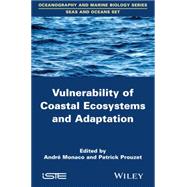The vulnerability of socio-ecosystem combines the probability of exposure to natural or anthropogenic pressure, sensitivity and resilience. This book presents a systemic view of the diversity of pressures and impacts produced by climate change and human actions. Erosion of biodiversity by changing ocean chemistry, the intensification of global change raises the problem of the adaptation of living resources.








